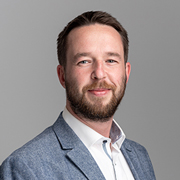Munich Hospital as a Case Study
Almost half of all German hospitals are operating in a deficit, with the trend continually increasing. In addition to financial difficulties, hospitals are under extremely high pressure to provide the best care to patients. On top of these challenges, regulations are constantly changing which requires significant effort from the industry to meet compliance as quickly as possible. Traditionally, hospitals operate through highly formalized approaches to project management. The strict adherence to traditional project management makes it difficult for hospitals to even consider other types of project management, particularly the Agile method and Agile project portfolio management. So how do hospitals even begin to adopt more Agile methods?
Munich Hospital is the second largest municipal hospital and one of about 2,000 hospitals in Germany. Like approximately half of all existing hospitals, Munich Hospital was in the red for a long time, which is why they decided to reorganize and re-strategize hospital projects in 2014 to avoid impending insolvency. The City of Munich and the federal government invested more than 750 million euros to modernize the hospital and put it on a sound footing so that it can continue to offer excellent care to patients.
Despite the traditional project management methods used in the healthcare industry, Munich Hospital managed to adopt the Agile method and Agile project portfolio management through a stringent but dynamic process. Impressively, the hospital also managed to do so while mostly operating in the black – not an easy feat for a hospital or any business changing the way they work.
We spoke to Marco Weidemeier, Head of Corporate Development at Munich Hospital to find out how they completed this project successfully.
About Marco Weidemeier
Marco Weidemeier is at home in both the business and medical worlds. He joined Munich Hospital in 2014 from a private hospital group with the intention of overseeing the switch from traditional project management methods to Agile. He was initially the overall project manager for the redevelopment and, at the end of 2016, took over the management of the Business Development division.
Meisterplan: Hello Marco, thank you for taking the time to talk to us. When talking about project management for a hospital, most people don’t think of Agile. We imagine hospitals operating with rigid and formalized processes and procedures. What do you think of the industry’s historically rigid project management structure?
Marco Weidemeier: It’s true that the healthcare industry has a rather traditional and formal image. However, you can’t afford not to be Agile. Even though a hospital’s main goal is to help patients, it’s still a business. This means projects have to be completed or you risk insolvency. In addition, Munich is a very competitive location, so we have to be Agile to compete. Additionally, we have to be Agile because of the dependencies on external stakeholders and legal requirements that are constantly making demands on us. For example, if there are new regulations on emergency care, we need to implement them quickly. Fortunately, there are currently more and more colleagues such as head physicians at Munich Hospital who are very open-minded about the changes.
Meisterplan: Munich Hospital started restructuring in 2014. In the course of restructuring, you came to the company and took over the project management. How did you manage to establish Agile project portfolio management in the company?
Marco Weidemeier: Unfortunately, it did not fall from the sky! It was not an easy task. Such an undertaking is a curse and a blessing at the same time. We had to close down part of the hospital during the project, but this allowed us to regroup and clearly define our basic pillars such as our medical architecture.
As part of the restructuring, with the help of Boston Consulting Group and Lohfert & Lohfert AG, we received a bundle of projects, from which we formed 9 clusters of thematically similar projects. These projects had clearly defined responsibilities. By using a new project portfolio management tool, we were able to better classify new topics and recognize dependencies. In the past few years, we already completed more than 100 out of some 200 individual projects. Additionally, our portfolio is actually going through a permanent makeover because we regularly question open projects. This helps us not lose focus. Projects that are no longer relevant due to legal changes will be deleted from the portfolio or reoriented to meet these requirements.
Meisterplan: That sounds like a lot of work. How did you get the staff on board?
Marco Weidemeier: The long inefficiency of the hospital led to downsizing which was difficult for the company and employees. It was important for us to meet with all those involved in the process and to communicate clearly which changes are being made and which results are being sought. However, we also had to ask the question, what do I communicate to whom and to what extent? Of course, the management has different requirements than the project team.
Meisterplan: I can imagine it wasn’t easy to implement the changes and highlight the benefits for all involved. What are the benefits of the Agile approach for the patients?
Marco Weidemeier: Patients benefit from optimized care and treatment concepts. We were able to reduce the number of service breaks and waiting times. An example of this is that in the future, we will book appointments for our patients precisely at the time they will be seen. There will be no more hours of sitting in the waiting room. If a patient is booked for 9:00am, he can assume that he will be called promptly at 9:00am.
Meisterplan: And how do you and the project leaders benefit from the switch to Agile?
Marco Weidemeier: For me, a clear advantage is the transparency of projects and the ability to be flexible with projects. Without this transparency, projects in the portfolio would sometimes fizzle out.
Our project managers feel more secure because they no longer pursue projects without a goal. They are also happy that the portfolio is constantly being evaluated. Our project managers have to opportunity scrutinize, react and change projects as necessary. This gives them a sense of freedom.
For our project staff, a higher need for communication has arisen, but we have managed this with structured meetings. Employees lacking experience in the project business are increasingly supported by the project managers and the PMO to ensure that the scope is clear.
Meisterplan: It sounds as if you have used the restructuring as an opportunity to make positive changes and developed yourself further as a company. Finally, Marco, what tips can you give to other companies or departments that face similar challenges?
Marco Weidemeier, laughing: Don’t do it! No seriously, I have three tips:
- Clarity
Structures and responsibilities must be as clear as the goals and resource availability. - Prioritization
It is essential to prioritize. The PMO must not be the trash can of the organization. - Regular Questioning
Is it still the right topic? Are we working on the right things?
These things must be constantly questioned and then also communicated transparently.
Meisterplan: Marco, thank you for the interesting insights into the PMO of Munich Hospital! We are delighted to hear so much about the unique agile PPM challenges in the healthcare sector.
Get the Right Tool for Agile Project Portfolio Management
Using the Agile method for project management can be hugely beneficial for many companies, but no method is complete without a tool. Senior management still needs a bird’s eye view of the portfolio to make strategic decisions. Meisterplan is a project portfolio management tool that works with any type of project management methods. It even works with companies that use multiple methods across teams and departments. Meisterplan only requires a small amount of information from your teams to put together an interactive portfolio that includes resources availability and allocation, real-time scenario planning, and portfolio comparison. To see how Meisterplan can help with Agile project portfolio management, start a free 30 day trial today.
Read Next

Riedel Conquers Hybrid R&D Projects with Meisterplan’s Strategic Resource Planning



